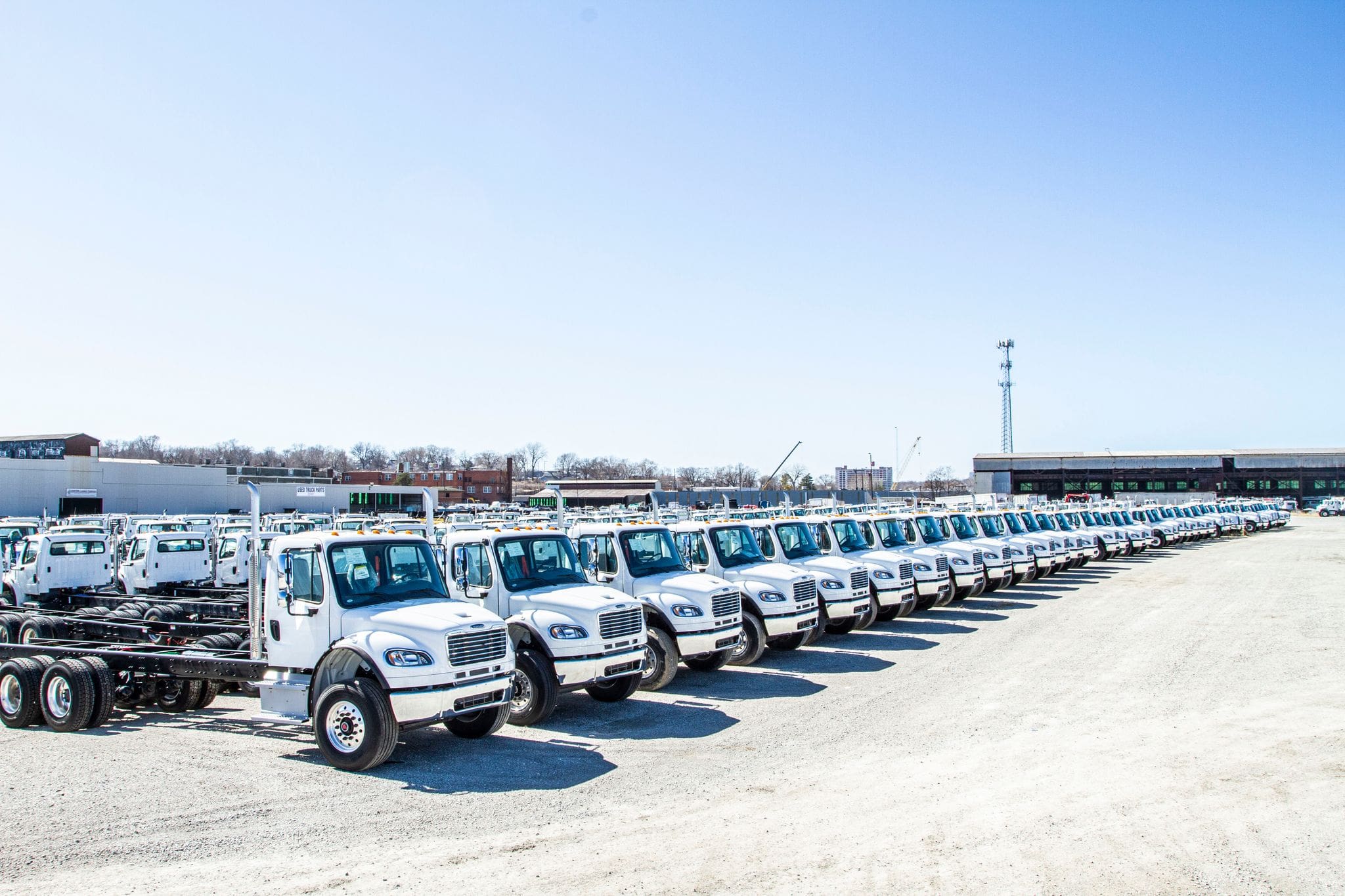
The COVID-19 pandemic has taught us to expect the unpredictable. That does not mean, however, that we cannot prepare for what comes next. Keeping the wheels of commerce turning is our job as supply chain professionals. But as the economy returns to normal after the pandemic, what will that job entail? How do we handle the current chassis shortage, and what comes next?
Why Is There A Chassis Shortage?
It’s no secret that supply chain shortages, most notably in microchips, have caused the automotive industry to struggle. Inventories on dealer lots look emptier and lead times for new vehicle orders grow. Consequently, we are experiencing a perfect storm of increased demand and low supply. In addition, the problem is compounded for commercial customers as manufacturers have shifted their focus to higher-profit vehicles, making locating work trucks even more challenging than before.
Dealerships of heavy commercial trucks are feeling the squeeze. With inventories at an all-time low, trucks are subject to taking up to 10 months for lead times. The availability of products is entirely unpredictable as manufacturers scramble to meet the high demand and dwindling supply. Most in the heavy equipment industry understand that estimated lead times are highly unreliable at the moment.
How Bad Is The Shortage?
An unprecedented 80 or so trucks are stuck at the South St. Paul Peterbilt repair shop, awaiting parts from suppliers that are struggling in the face of a global supply chain breakdown.
“They can’t get the materials, they don’t have enough labor to build the parts that go on the trucks,” says Peterbilt’s Director of Truck Sales Tom Wentworth. “So all those things are now happening like a perfect storm.”
However, those on the front line are noting that availability is improving. At a steady but slow trickle, it may be another year before the improvements provide a noticeable impact. Since inventory is running low, it’s vital to plan ahead. Planning ahead and proactively acquiring trucks is a strategy to help ensure you don’t run out of vehicles.
How Did The Chassis Shortage Start?
How did the current inventory crisis begin? As a result of the COVID-19 pandemic, component manufacturing plants slowed down. The cause of the outage is a combination of factors, including the outsourcing of critical components worldwide, a just-in-time supply of components, and a fire in one of a major vendor’s facilities.
The electrical systems in vehicles have become much more sophisticated over the years, allowing them to be safer, more productive, and more comfortable. One of the fundamental components of these systems is the microchip.
Microchips are made up of semiconductors. Depending on the complexity of the task, each microchip contains literally millions of semiconductors. Due to the pandemic, a disaster, and increased demand, semiconductors for microchip manufacturing have become scarce. Other components like wiring harnesses, trucks mirrors and plastic parts are also limited by raw material shortages and global shipping bottlenecks.
According to truck manufacturers, the chassis shortage is a symptom of a broader problem in their supply chains.
Valuations of Used Trucks Soar
As the supply pool of materials for new chassis shrinks, naturally, the market moves toward acquiring used vehicles to perform the many services required by construction, utility, and other work trucks. The value of these older vehicles rises to meet the overwhelming demand.
The average used Class 8 truck’s value increased 68% from June 2020 to June 2021, while the average miles and age decreased by 5% and 2%, respectively, according to ACT research.
According to Tim Denoyer, ACT’s vice president, and senior analyst, the U.S. economy will grow at an extraordinary 6.2% in Q3 of 2021 but will struggle with temporary inflation. In his projection, Denoyer predicted the chassis shortage will last six to twelve months, and that it will worsen before it improves.
Looking To The Future
Forecasters predict that Class 8 truck orders will remain strong. In the United States and Canada, Class 8 retail sales are estimated between 260,000 and 280,000 vehicles.
Reports state that Kenworth, DAF, and Peterbilt just delivered 40,100 trucks, and another 6,500 trucks are awaiting key components. This points to hope on the horizon. In contrast, here are some truck makers who have not yet booked any orders for next year. “…component costs are so high right now that it’s difficult for them to quote a good price where it’s profitable for the company but not excessive for the customer,” says Don Ake, vice president at FTR’s commercial vehicles division.
Cummins spokesman said the company relies on multiple suppliers in a variety of markets to mitigate supply-chain pressures and keep up with demand, according to a Wall Street Journal article.
Based on current supply and demand forecasts, it can be safely assumed that the work truck shortage will persist well into 2022. Procrastination is not an effective approach when it comes to adding trucks to your fleet. It is recommended that you order well in advance and start your search as soon as possible.



